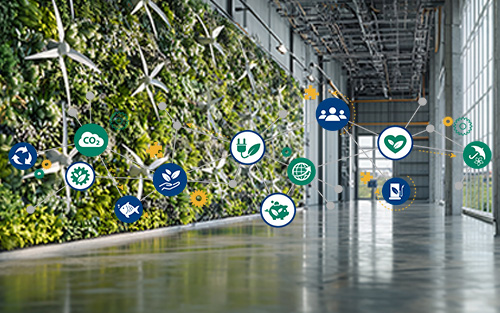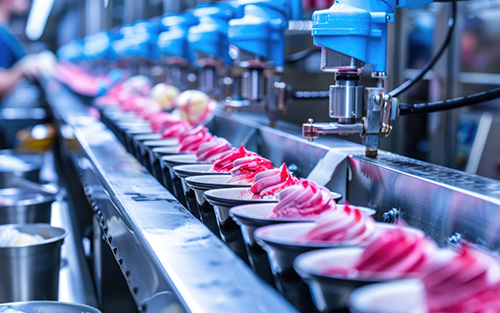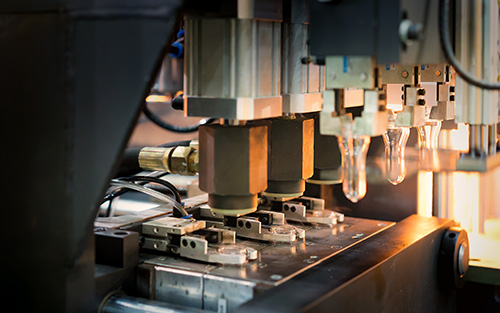- By John Weber
- May 20, 2025
- Software Toolbox
- Feature
- Sponsored
Summary
Let’s dive into how three companies achieve their goals using automation technology as a key enabler of sustainable and profitable operations.

What do ice cream in the USA, beer in Africa and a global packaging manufacturer have in common? It’s clear they serve the needs of consumers with products and a means to deliver the products to them. But they also each have been on their own digital transformation journey to meet their sustainability goals, reduce waste and in one case also manage with making their product in one of the driest places on the planet.
Let’s dive into how three companies achieve their goals using automation technology as a key enabler of sustainable and profitable operations. We will do this through a series of challenges and case studies showing how off-the-shelf solutions empowered their results.
Ice cream: Waste reduction and automated inspection device integration
Food, Beverage, and Consumer Packaged Goods manufacturers face ever increasing product variability requirements and margin squeeze when commodity prices increase raw input costs while they are limited in how much they can raise price in a competitive market. Regulatory, labeling and packaging requirement variance across markets adds to the complexity, making it essential for operations to run at peak efficiency while delivering consistent, compliant products every time.

Waste reduction is one component that always impacts these markets, and when margins are constrained by input scarcity and higher costs, it matters more than ever. A common issue is overfilling or underfilling product containers, which can happen for many reasons. In some processes, spot checks are performed, which has its own range of problems, and in many cases cannot be used and rather 100% inspection must be carried out. For those inspections, a variety of technologies can be used depending on the nature of the product and inspection.
Directly digitally integrating those devices with other systems–HMI, SCADA, MES and ERP - to track and report on waste, is not always trivial. The devices will have physical digital and analog I/O that can be wired to control systems. But what about using the serial or Ethernet digital interfaces for setting up product changeovers and collecting more granular details to quantify waste? The devices will often speak their own “language” or what automation engineers call a “communications protocol” over that physical connection. And too often they turn to custom code.
Software Toolbox has used their OmniServer software to enable engineers to visually implement the device communications protocol on these inspection devices. In one case, an ice cream manufacturer added a scale to the end of the filling line allowing for each ice cream container to be automatically weighed as it comes through. That weight information is monitored by OmniServer, tracked and reported on. When changing products, the HMI or MES can send the details of the weight range for a specific product into the system using OmniServer. That information can be used for the weight checkpoint but also written into the controller setpoint.
Information can either be monitored in real-time by a person who now knows the exact weight of every container immediately and can adjust the machinery accordingly. With real-time-digitally delivered data, they can track and report results and identify ways to reduce waste. The operators and other systems, possibly someday AI algorithms determine the fix, but Software Toolbox’s OmniServer empowered those decisions with the data. As an extension, the same solution can be used to handle managing printers that apply lot number, date, and other markings to the packages. See more OmniServer solutions.
Brewing beer in the desert: Managing scarce resources of all types
Namibian Breweries, Ltd (NBL) brews millions of hectoliters of beer in Windhoek Namibia, Africa, one of the driest places in the world, and sells throughout southern Africa. As if that wasn’t challenging enough, they brew their beer to the Reinheitsgebot or "German Beer Purity Law" designation for which they are regularly inspected and re-certified. Any beer connoisseur is likely familiar with this standard.

To accomplish this, they import all their ingredients except water. Their precious water is sourced from lands the brewery owns, but they are exceptionally cautious to identify leaks and prevent wastage of such a precious resource.
Power is provided from a variety of sources, including of course the sun in such a hot, dry place. They heat the water for their cleaning cycles using boilers fired by wood chips from an invasive species that they buy from locals who are thus incentivized to remove the species. They also source power from a local producer and have diesel backup generators. And to make it even more challenging: the local power producer is upwind of the NBL site, and there are problems with particulate deposits on the solar panels from that site!
Even waste products are valued. NBL sells their spent wort to local dairy farmers but have to coordinate with them so they know when to pick up full loads of spent wort. Even this is done digitally.
To meet these challenges, NBL has used a solutions stack of products from Software Toolbox and AVEVA (formerly Wonderware). Software Toolbox provides TOP Server and the Cogent DataHub to empower NBL’s digital solution to these challenges.
TOP Server connects to their PLCs, electric meters and battery backups using a host of device protocols, and delivers that data to the AVEVA Historian and to the Cogent Datahub. The Cogent DataHub tracks the output of the solar plant on the roof of the brewery and delivers information they use to determine when panels need to be cleaned or otherwise serviced to assure maximum output. Cogent DataHub also integrates the data to their brewing distributed control system, BrewMaxx. The TOP Server and Cogent DataHub combination also provides a secure portal that farmers use to know when it is time to pick up loads of spent wort, based on actual tank levels, thus reducing unnecessary trips and associated pollution from the trucks.
In the end the results are more than great beer. Using the insights empowered by data delivered by and Software Toolbox’s products and support, NBL have seen a +/- 45% electrical efficiency improvement in their water treatment, +/- 13% efficiency improvement in CO2 recovery, and a +/- 6% efficient improvement in cooling, which accounts for 25% of their electricity consumption. Learn more about NBL’s implementations here.
Packaging sustainability goal achievement
Moving on in our examples to the packages that products are delivered in: Amcor operates in over 40 countries to provide innovative, sustainable and high-quality packaging. With a commitment to 100% recyclable or reusable packaging by 2025 and net zero carbon emissions by 2050, they continuously seek ways to optimize operations and reduce its environmental impact.

By leveraging real-time data, Amcor minimizes overproduction, scrap and material waste, and reduces unnecessary machine runtime to lower energy consumption. Improved visibility across operations ensures a more resilient and sustainable manufacturing process.
This was not always the case: Amcor faced significant industrial data integration and standardization challenges, requiring a solution that could scale across multiple sites while ensuring consistent and reliable data management. With diverse control systems manufacturers and legacy systems in use, standardizing communication between controllers and devices was essential.
Additionally, interoperability across sites was a priority, as seamless data integration was needed to accommodate various technologies while maintaining flexibility for site-specific requirements. Furthermore, there are shared engineering support resources between plants, and having a common platform was necessary to reduce training costs and wasted time from those resources having to know how to use multiple software solutions.
Without a centralized system based on a common platform, detecting inefficiencies and optimizing production across locations was difficult, limiting real-time decision-making and overall operational performance.
To address these challenges, Amcor implemented TOP Server across 25 plants in the United States, enabling standardized communication and streamlined operations with a common solution. The TOP Server industrial device connectivity solutions integrate and exchange critical production data with AVEVA System Platform and AVEVA Manufacturing Execution System, helping Amcor streamline operations and reduce energy consumption in alignment with its sustainability objectives. This has led to a 3% improvement in production cycle time and a 2% increase in Overall Equipment Effectiveness (OEE) by enabling real-time, centralized access to production data.
The sustainability efforts of Amcor are directly tied to its ability to scale and execute quickly, leveraging extensive connectivity built over the past three years. By integrating data from sensors, ITUs, PLCs and machines, the company consolidates information to enhance AI-driven analytical models for improved efficiency. Learn more about Amcor’s journey and their experience working with Software Toolbox’s team here.
Conclusion
No business decision or improvement can be made without data to know where to look, and to know if changes have achieved desired results. The opportunities with AI and other advanced technologies are endless, but require accurate, reliable data. In these three case studies, you saw how off-the-shelf solutions from Software Toolbox empowered these manufacturers to achieve significant business and sustainability results. Learn more about the industries Software Toolbox empowers and put their nearly 30 years’ experience to work enabling your digital transformation journey.
About The Author
 John Weber is president and founder of Software Toolbox. Weber has worked in automation software for 35 years and since 1996 has led the Software Toolbox team that’s focused on delivering complete product experiences that combine innovative open software solutions, expert knowledge of how to apply the software to solve problems and support that 97 percent of users say is “awesome” or “excellent.”
John Weber is president and founder of Software Toolbox. Weber has worked in automation software for 35 years and since 1996 has led the Software Toolbox team that’s focused on delivering complete product experiences that combine innovative open software solutions, expert knowledge of how to apply the software to solve problems and support that 97 percent of users say is “awesome” or “excellent.”
Did you enjoy this great article?
Check out our free e-newsletters to read more great articles..
Subscribe

